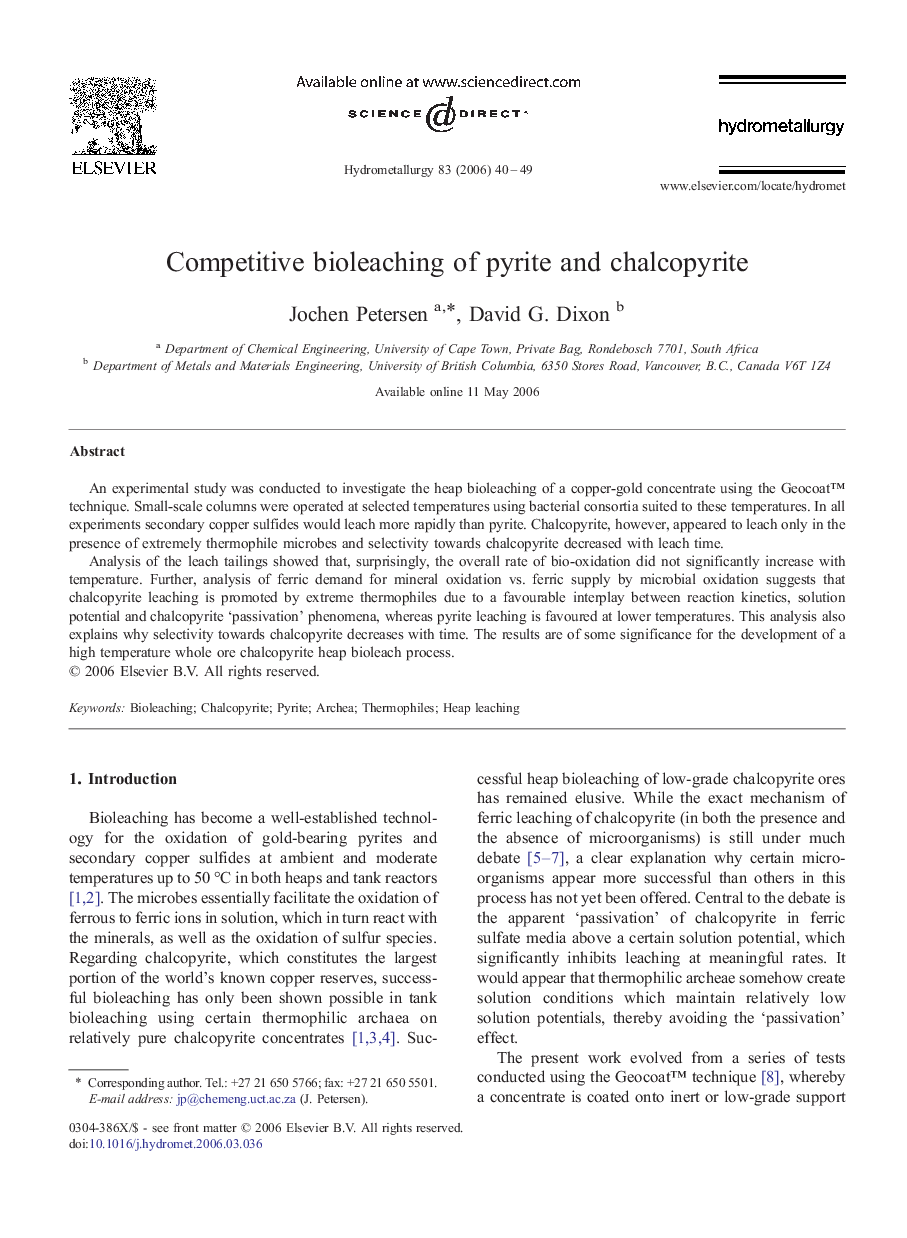| Article ID | Journal | Published Year | Pages | File Type |
|---|---|---|---|---|
| 213590 | Hydrometallurgy | 2006 | 10 Pages |
An experimental study was conducted to investigate the heap bioleaching of a copper-gold concentrate using the Geocoat™ technique. Small-scale columns were operated at selected temperatures using bacterial consortia suited to these temperatures. In all experiments secondary copper sulfides would leach more rapidly than pyrite. Chalcopyrite, however, appeared to leach only in the presence of extremely thermophile microbes and selectivity towards chalcopyrite decreased with leach time.Analysis of the leach tailings showed that, surprisingly, the overall rate of bio-oxidation did not significantly increase with temperature. Further, analysis of ferric demand for mineral oxidation vs. ferric supply by microbial oxidation suggests that chalcopyrite leaching is promoted by extreme thermophiles due to a favourable interplay between reaction kinetics, solution potential and chalcopyrite ‘passivation’ phenomena, whereas pyrite leaching is favoured at lower temperatures. This analysis also explains why selectivity towards chalcopyrite decreases with time. The results are of some significance for the development of a high temperature whole ore chalcopyrite heap bioleach process.
